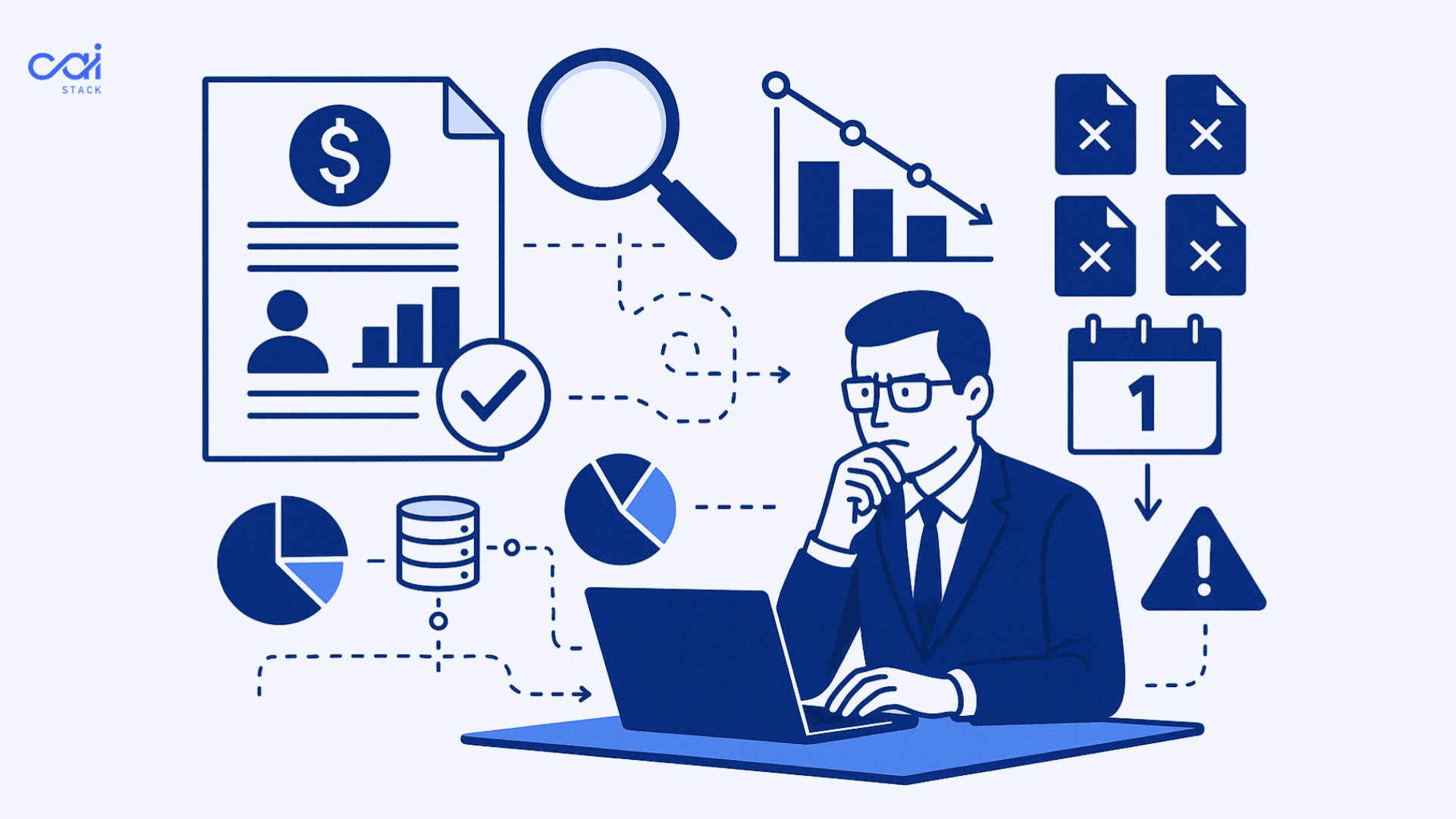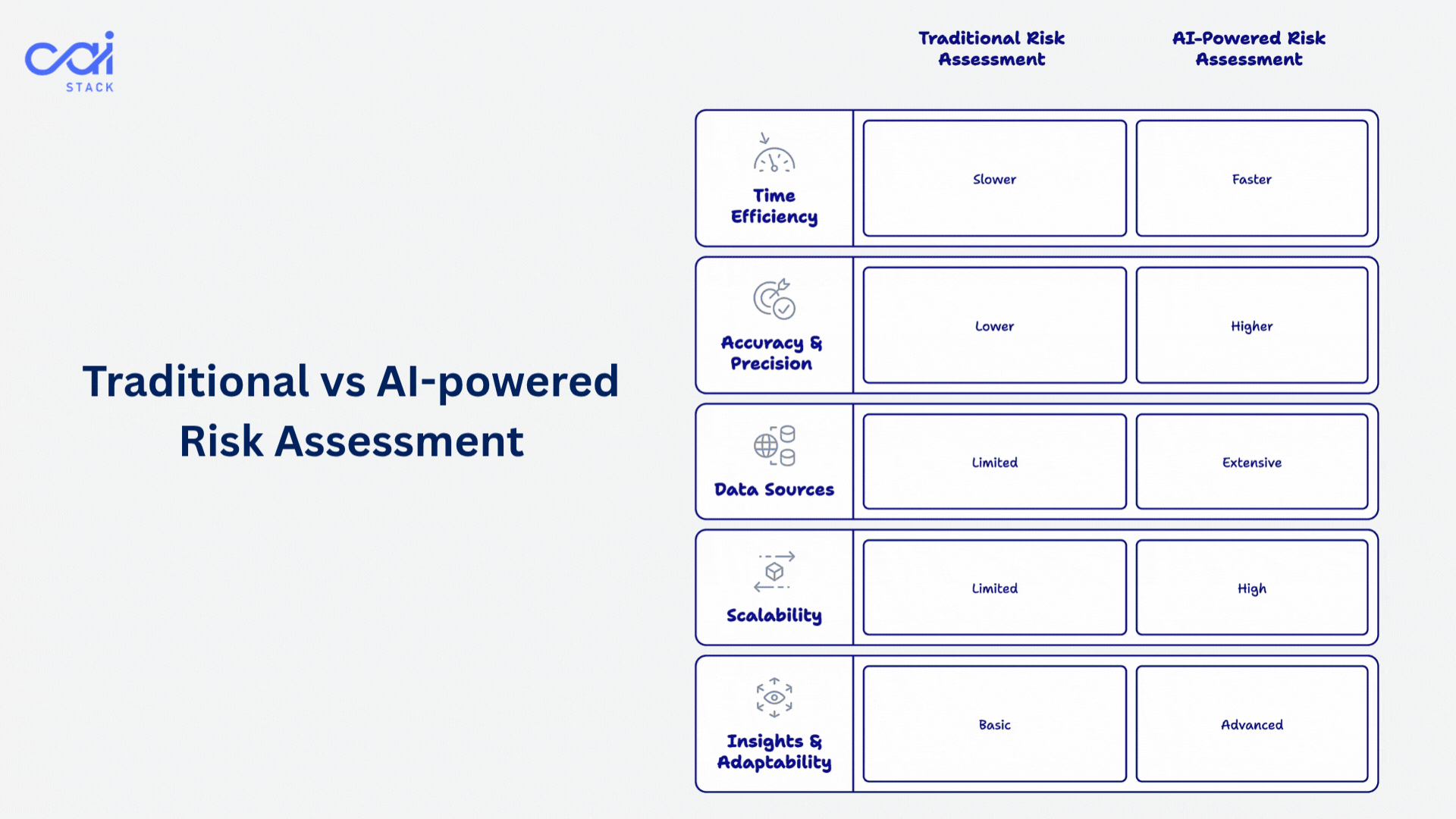The loan application looks solid on paper with strong revenue, a decent credit score, and no obvious red flags.
Your analyst approves it. Two months later, the first payment is late. Four months in, the account is in default.

What happened?
The credit score didn't catch the pattern. Three other lenders had declined the same applicant last quarter. Industry data showed their sector was contracting. Payment behavior with other vendors had moved weeks earlier.
All the signals were there. But scattered across different systems. Different sources. Different formats.
By the time anyone pieced it together, the decision was already made.
Instead of fragmented data and delayed insights, organizations get comprehensive risk profiles in real-time. Autonomous agents connect information across every relevant source and flag what matters before decisions get made.
Here's how the risk summary agent is reshaping financial risk management.
Many organizations still follow traditional processes like Spreadsheets, credit scores, historical data, manual reviews, etc.
The approach is slow. Expensive. And misses important alerts.
Here's what happens:
The financial risk landscape moves too fast for traditional methods. Organizations need systems that keep pace.

Let's examine what makes AI-driven risk assessment fundamentally different.
One agent monitors credit data in real-time. Another tracks market indicators. A third analyzes transaction patterns. Another watches for regulatory changes.
They work simultaneously. They share insights. They flag anomalies instantly.
Here's a typical scenario:
A new client applies for credit. Traditionally, teams spend 2-3 days gathering information and making decisions.
Total time taken is always in minutes and not in days.
In fact, a survey of 120 banking professionals in 3 major Omani banks found that AI tools flagged ~92% of reported fraud cases, with 83% of respondents agreeing that AI improved overall detection accuracy.
These agents learn from every decision. They improve over time. They spot patterns that would take human analysts years to identify.
What do organizations actually achieve when they implement risk assessment AI? Let's see:
Recent studies have demonstrated that AI systems can improve risk identification accuracy by 76%, significantly enhancing the effectiveness of risk assessments.
The Risk Summary Agent from CAI Stack shows what smart risk assessment AI can deliver.
AI evaluates tone and intent in communications and financial disclosures. This surfaces early warning signs before traditional metrics show problems.
Payment email language shifts from confident to uncertain? The system notices.
The agent allocates contextual risk scores across multiple dimensions - credit risk, operational risk, and compliance risk.
These scores adjust based on predefined thresholds and custom models specific to each organization's risk needs.
Anomalies get flagged automatically. Regulatory breaches. Negative trends. Pattern deviations that require urgent attention.
The system doesn't wait for quarterly reviews. It alerts teams the moment something changes.
Risk Summary: Agent pulls information from everywhere:
This progress is especially evident in the analysis of large volumes of unstructured data, where AI excels in identifying patterns and anomalies that might be missed by traditional methods.
Catch how Risk Summary Agent handles your specific risk assessment requirements. CAI Stack builds custom AI agent systems that integrate with existing workflows and data sources. Book a personalized consultation with our team to explore capabilities.
Organizations already use risk management software. Fair point.
But there's a fundamental difference between traditional risk tools and modern AI agents.
Financial risk is depicted differently depending on the industry.
In 2023, global financial institutions reported $485.6 billion in fraud losses, emphasizing the urgent need for an AI-powered risk agent.
Credit decisions need speed and accuracy. Autonomous agents analyze loan applications against thousands of data points in real-time. They flag potential defaults before they occur by monitoring the loan borrowers' behavior continuously.
In the U.S., banking fraud losses are projected to reach $40 billion by 2027, making real-time monitoring and predictive risk assessment necessary for financial institutions.
Across sectors, 72% of organizations have adopted AI technologies by 2024, allowing faster and more accurate risk assessments in areas like supply chain management.
Supplier risk can halt operations. AI agents track supplier financial health, geopolitical factors, and performance metrics. They alert teams to backup suppliers before disruptions occur.
Underwriting depends on accurate risk assessment. Agents process claims history, external risk factors, and predictive models to price policies correctly. They identify fraud patterns that manual reviews ignore.
Around 73% of organizations report regulatory oversight on predictive analytics, and AI-driven risk solutions must ensure compliance and proactively identify potential threats.
Tools failure and vendor reliability create operational risk. Risk summary Agents monitor supplier stability, predict maintenance needs, and assess project risk in real-time.
Modern autonomous agents connect with current systems seamlessly.
Organizations don't rebuild everything from scratch. The agent layer sits on top of existing infrastructure, pulling data where it already lives.
The system aligns with internal scoring models and regulatory frameworks. It trains on organizational rules and risk points.
Each institution has different risk and compliance requirements and different decision criteria. Risk Summary Agent adapts to those specifics rather than forcing organizations into generic templates.
Here's what organizations need to understand:
Risk assessment AI delivers speed, accuracy, and scale that traditional methods can't match. Autonomous agents monitor continuously, learn constantly, and flag problems before they become crises.
Ready to see Risk Summary Agent in action? Schedule a free consultation now to discuss specific needs and implementation, and to help you design and deploy autonomous agent solutions tailored to the risk management requirements.
Subscribe to get the latest updates and trends in AI, automation, and intelligent solutions — directly in your inbox.
Explore our latest blogs for insightful and latest AI trends, industry insights and expert opinions.
Empower your AI journey with our expert consultants, tailored strategies, and innovative solutions.